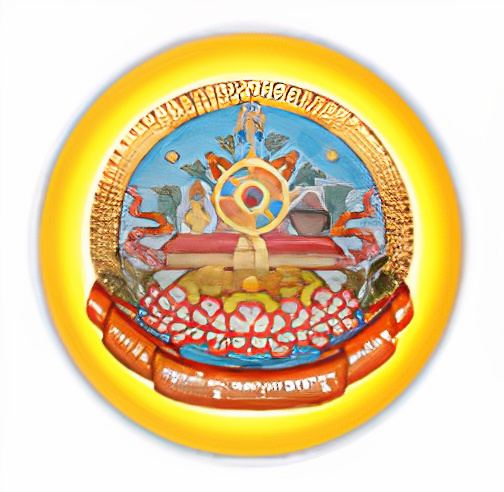Arya Tara, often called the "Mother of Liberation," is one of the most beloved female Buddhas in Tibetan Buddhism. She is regarded as the embodiment of compassion in action, a swift protector who responds immediately to the prayers of those in need. Tara represents enlightened activity and is venerated across Buddhist traditions for her ability to remove obstacles, grant blessings, and guide practitioners toward awakening.
According to tradition, Tara was born from the compassionate tears of Avalokiteshvara, the Bodhisattva of Infinite Compassion, who wept upon seeing the endless suffering of beings. From his tears, a lotus blossomed, and from it arose Tara, signifying her role as the compassionate savior who swiftly comes to the aid of all who call upon her. Unlike many deities who vow to attain enlightenment in a male form, Tara vowed to always remain in a female form, symbolizing the equality of women in attaining Buddhahood.
Forms of Tara
Tara manifests in many aspects, but the two most common are:
*Green Tara: Known as the embodiment of enlightened activity, quick to protect from fears, dangers, and obstacles.
*White Tara: Associated with long life, healing, and peaceful blessings.
There are also 21 forms of Tara, each representing different qualities such as courage, healing, protection, and abundance.
Symbolism
Tara is often depicted as a youthful goddess seated on a lotus, with her right leg extended, symbolizing her readiness to come to the aid of beings.
Her right hand is in the gesture of generosity, offering protection and blessings, while her left hand holds a lotus, symbolizing purity and wisdom.
Her green color (in Green Tara form) represents energy and active compassion, while white symbolizes serenity and healing.
Benefits of Tara Practice
- Removes Obstacles: Protects practitioners from fear, dangers, illness, and negative forces.
- Swift Compassion: Responds quickly to sincere prayers and calls for help.
- Healing & Longevity: Especially in her White Tara form, she bestows health, vitality, and long life.
- Wisdom & Enlightenment: Cultivates inner clarity, wisdom, and compassion.
- Merit & Purification: Reciting Tara’s mantra (Om Tare Tuttare Ture Soha) generates vast merit and purifies negativities.
Role in Buddhist Practice
For centuries, Arya Tara has been a central figure in daily prayers, rituals, and meditation practices in Tibetan Buddhism. Devotees recite the 21 Praises of Tara and her mantra to invoke her blessings. Monasteries and lay practitioners alike rely on her compassionate presence for protection, guidance, and the fulfillment of spiritual and worldly aspirations.
In essence, Arya Tara is more than a deity, she is a living presence of compassion, a spiritual mother who nurtures, protects, and guides all beings on the path to liberation.

